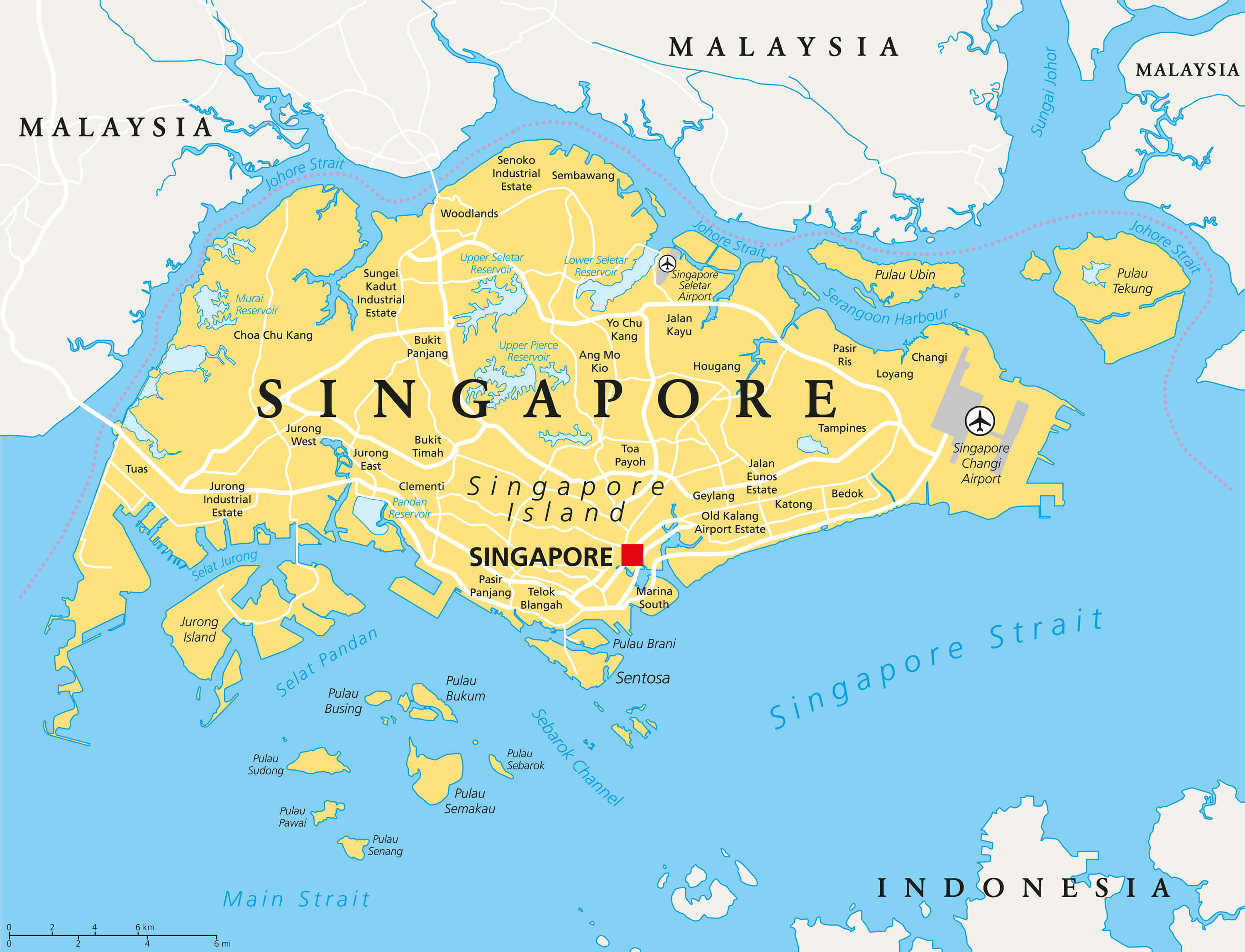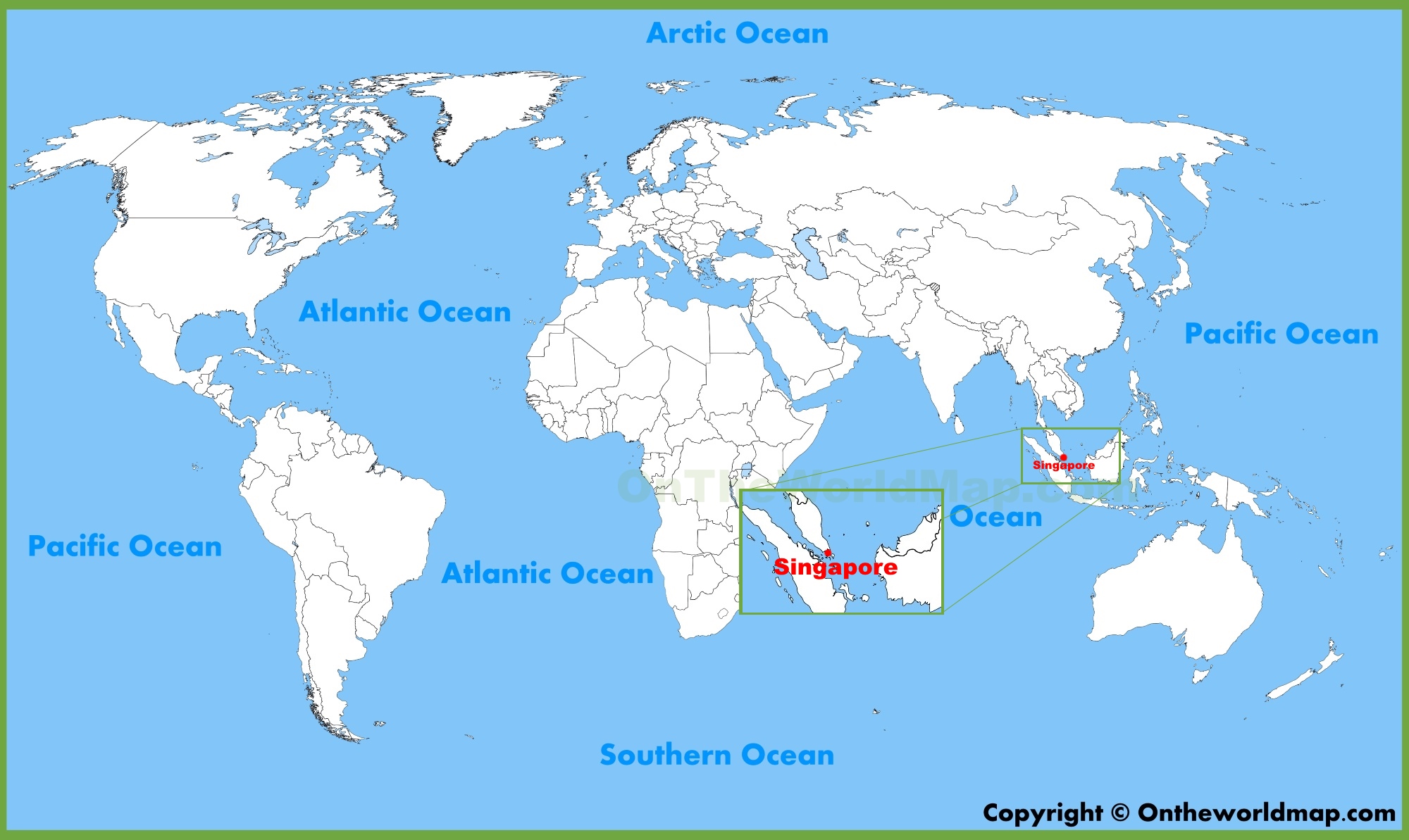Singapore To End Trade Ties With US - What This Could Mean
Singapore is making waves with a bold decision to rethink its trade partnership with the United States. This move comes amid a changing global economic scene. Trade ties between these two nations have historically been robust, with Singapore acting as a key hub in Southeast Asia. Yet, the city-state seems to be charting a new course. Could this decision signal a larger shift in international relations? Many observers are watching closely to understand the implications.
For decades, Singapore has been a strategic ally for the US in the region, with trade playing a pivotal role in their relationship. The decision to end these ties, however, suggests that Singapore is reevaluating its economic priorities. This could be a response to shifting global trends or an effort to diversify its economic partnerships. Whatever the reason, the move has sparked conversations about the future of trade relations in Asia.
As Singapore navigates this decision, many are left wondering what this could mean for both countries. Could it lead to economic challenges, or will it open up new opportunities? Understanding the factors behind this decision is crucial for anyone following global trade dynamics. Let’s take a closer look at what might be driving this change and its potential impacts.
Why Is Singapore Ending Trade Ties with the US?
At the heart of this decision lies a complex web of factors. For one, Singapore might be looking to reduce its reliance on the US market. In recent years, the global trade landscape has undergone significant changes. Trade tensions between major economies have created uncertainty. For Singapore, this could mean exploring other avenues to secure its economic future. So, it's almost like the city-state is recalibrating its economic compass.
Another reason could be Singapore’s desire to strengthen ties with other regional players. As a matter of fact, the country has been actively engaging with neighboring nations. This could be seen as an effort to fortify its position as a regional trade hub. In some respects, it’s about spreading its economic wings and finding new partners. The decision, therefore, is not just about ending ties but about reshaping its trade alliances.
Could Economic Diversification Be the Driving Force?
One of the key factors driving this decision might be Singapore’s push for economic diversification. The country has always been forward-thinking in its approach to development. It tends to be proactive in adapting to changing circumstances. So, rather than sticking to the same old trade routes, Singapore could be exploring fresh opportunities. This is more or less about ensuring long-term economic stability.
For example, Singapore might be eyeing emerging markets in Asia. These markets offer immense potential and could be a game-changing opportunity. In the meantime, diversifying trade relationships can help mitigate risks. It’s like having multiple baskets for eggs, ensuring that if one market falters, others can still support the economy. This strategy could be crucial for Singapore’s continued prosperity.
What Does This Mean for Singapore to End Trade Ties with US?
The implications of this decision are vast and varied. For Singapore, ending trade ties with the US could mean a shift in focus. It might be slightly more challenging to navigate the initial phase of this transition. Yet, it could also open up new avenues for growth and development. In short, it’s about finding the right balance between old and new alliances.
Meanwhile, for the US, this could mean rethinking its approach to trade in Asia. The country might need to reassess its strategies to maintain its influence in the region. As a matter of fact, trade relations are not just about economics but also about diplomacy. So, the US might need to explore ways to strengthen its ties with other nations in the region. This could be crucial for maintaining its economic clout.
What Are the Potential Challenges?
Of course, ending trade ties is not without its challenges. Singapore might face some resistance from businesses that have long relied on the US market. For instance, companies that have established supply chains could be affected. These businesses might need to adjust their operations to accommodate the new reality. In a way, it’s like rewiring a complex machine to work in a different way.
Similarly, the US could also face challenges in finding alternative partners. The loss of a key ally like Singapore could impact its trade balance in the region. As a result, the US might need to work harder to maintain its economic presence. Naturally, this could lead to some short-term disruptions. Yet, with the right strategies, these challenges could be managed effectively.
How Will Businesses Adapt to This Change?
Businesses in both countries will need to adapt to this new reality. For Singapore-based companies, it might mean exploring new markets and partnerships. In fact, this could be an opportunity to expand their reach and diversify their offerings. Instead of focusing solely on the US, they could look at other regions for growth. This could be a chance to tap into emerging markets and discover new opportunities.
Meanwhile, US companies might need to rethink their strategies for the Asian market. They could explore other countries in the region to fill the gap left by Singapore. This could involve building new relationships and establishing new supply chains. Arguably, this could lead to more dynamic and resilient trade networks. In the long run, it might even strengthen the US’s position in Asia.
Is There a Risk of Economic Downturn?
Some might worry about the risk of an economic downturn due to this decision. Yet, it’s not all doom and gloom. Singapore has a strong economy and a resilient business environment. It’s well-equipped to handle such transitions. Similarly, the US has a vast and diverse economy that can absorb such changes. So, the risk of a significant downturn might be rather low.
Still, it’s important to monitor the situation closely. Both countries need to ensure that the transition is smooth and does not disrupt economic activities. In the same way, businesses need to be prepared for any changes that might arise. By staying informed and proactive, they can mitigate any potential risks. This could be the key to a successful transition.
What Are the Benefits of This Decision?
Despite the challenges, there could be significant benefits to this decision. For Singapore, it could mean greater economic independence and flexibility. By diversifying its trade relationships, the country could reduce its reliance on a single market. This could lead to a more balanced and sustainable economic growth. In fact, it might even enhance Singapore’s standing as a global trade hub.
Similarly, for the US, this could be an opportunity to strengthen its ties with other nations. By expanding its trade network, the US could enhance its economic influence in the region. This could lead to more dynamic and diverse trade relationships. In the long run, it might even lead to greater economic stability and growth for both countries. Anyway, the potential benefits could outweigh the challenges.
How Will This Impact Global Trade Dynamics?
This decision could have a ripple effect on global trade dynamics. Other nations might take notice and consider similar moves. In the same way, it could inspire a rethink of existing trade relationships. This could lead to a more dynamic and interconnected global trade network. Clearly, the implications go beyond just Singapore and the US. It could be a catalyst for change in the global trade landscape.
For instance, other countries in Asia might see this as an opportunity to strengthen their ties with Singapore. They could explore new trade partnerships and collaborations. This could lead to a more integrated and cohesive regional economy. Similarly, global players might reassess their strategies in light of this change. Ultimately, it could lead to a more balanced and diverse global trade ecosystem.
What’s Next for Singapore to End Trade Ties with US?
As Singapore moves forward with this decision, the focus will be on implementation. The country will need to ensure a smooth transition to avoid any disruptions. This could involve working closely with businesses and stakeholders to address any concerns. In the same way, it might need to engage with other nations to establish new trade relationships. So, it’s all about taking the right steps to ensure a successful transition.
Meanwhile, the US will need to reassess its strategies and explore new opportunities. It might need to work harder to maintain its influence in the region. This could involve building new partnerships and strengthening existing ones. By doing so, it could ensure its continued relevance in the global trade arena. Anyway, the next steps will be crucial for both countries as they navigate this change.
Summary
In conclusion, Singapore’s decision to end trade ties with the US is a significant move with far-reaching implications. It reflects a broader shift in global trade dynamics and highlights the importance of economic diversification. While there are challenges to overcome, the potential benefits could be substantial. As both countries navigate this change, they will need to stay informed and proactive. Ultimately, this decision could lead to a more balanced and diverse global trade network.
Table of Contents
- Why Is Singapore Ending Trade Ties with the US?
- Could Economic Diversification Be the Driving Force?
- What Does This Mean for Singapore to End Trade Ties with US?
- What Are the Potential Challenges?
- How Will Businesses Adapt to This Change?
- Is There a Risk of Economic Downturn?
- What Are the Benefits of This Decision?
- How Will This Impact Global Trade Dynamics?



Detail Author:
- Name : Gust Corwin DVM
- Username : mcummerata
- Email : rbuckridge@runolfsson.com
- Birthdate : 1992-01-13
- Address : 16207 Tony Spring Apt. 703 Murphyville, CT 87017
- Phone : +1-906-948-9086
- Company : Zieme-Legros
- Job : Podiatrist
- Bio : Tempora alias explicabo ut sed ratione. Ut id rerum optio ducimus ratione modi voluptas. Ipsum dolores nam culpa natus.
Socials
linkedin:
- url : https://linkedin.com/in/hudsonf
- username : hudsonf
- bio : Itaque ut sapiente et aut.
- followers : 1809
- following : 2434
facebook:
- url : https://facebook.com/fred_xx
- username : fred_xx
- bio : Eos aut nesciunt vitae inventore magnam. Eum quod est ut sequi soluta.
- followers : 3850
- following : 1241
twitter:
- url : https://twitter.com/fred4231
- username : fred4231
- bio : Enim quod voluptatem laborum commodi est. Tempora enim esse exercitationem velit commodi sunt minima ut. Aliquam eos voluptatem necessitatibus est.
- followers : 5147
- following : 2594
tiktok:
- url : https://tiktok.com/@hudson1979
- username : hudson1979
- bio : Consequatur quas architecto maiores corrupti eos quia numquam.
- followers : 1779
- following : 954
instagram:
- url : https://instagram.com/fhudson
- username : fhudson
- bio : Magnam omnis autem iure quod. Odio id qui dicta fuga.
- followers : 1009
- following : 352